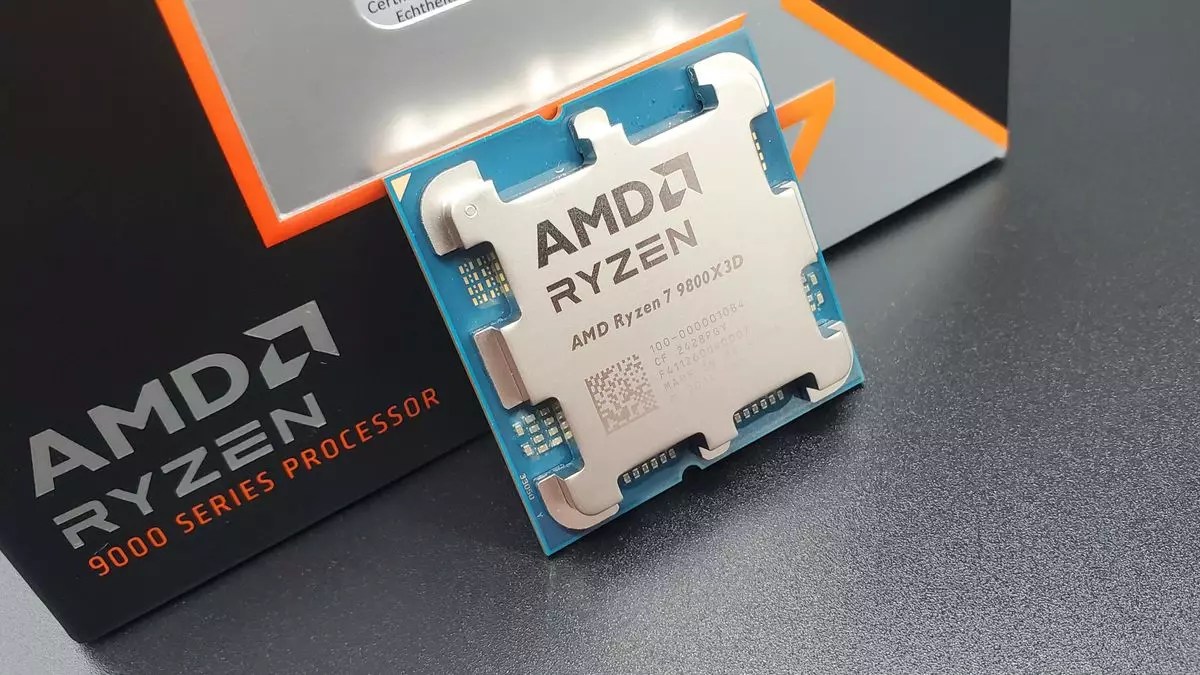In the fast-evolving world of computing, the competition between AMD and Intel continues to captivate enthusiasts and gamers alike. While the focus has recently been on Nvidia’s newest graphics cards, it’s essential to shift our gaze back to the developments in the CPU market, particularly the new line-ups introduced by both AMD and Intel in recent months. As we dive into this intricate narrative, we look at the latest advancements in processing technology and how they are shaping future performance and market dynamics.
Intel has introduced its Core Ultra 200S processor line, known internally as ‘Arrow Lake’, which, despite the hype surrounding its potential, has been met with lukewarm reactions from critics and consumers alike. These new processors aimed to elevate Intel’s standing in the market and provide competitive performance against AMD’s offerings. However, the initial reception has indicated a gap in innovation compared to expectations. If anything, the Core Ultra 200S series seems to land firmly in the realm of “more of the same,” with incremental improvements rather than groundbreaking advancements.
On the other hand, AMD’s recent foray into the 9000-series with its Zen 5 architecture has stirred considerable excitement. During AMD’s Q4 2024 earnings call, CEO Dr. Lisa Su highlighted the success of their launch, claiming it to be one of their strongest sell-outs in years. This enthusiasm reflects a proactive rebirth for AMD, especially during a critical sales period such as the holiday season. The Ryzen 7 9800X3D, in particular, has been touted as the best gaming CPU available, leading to increased interest but also supply challenges in the market.
AMD’s claim of strong sales performance is further complicated by the realities of supply chain constraints. While the high demand for the Ryzen 7 9800X3D suggests robust consumer interest, the persistent stock shortages indicate a struggle to scale up production efficiently. This phenomenon is not new in the tech industry and highlights the delicate balance between demand surges and supply stability. It raises questions about whether the apparent success is truly reflective of sustained market interest or simply a representation of limited availability.
Interestingly, one ought to draw comparisons to Nvidia’s launches of the RTX 5080 and RTX 5090, which many critics labeled as “paper launches”—offerings marketed without corresponding availability. Fortunately for AMD, their 9000-series launch does not fall into the same category since the demand is real, even if the supply has been slower to catch up. Dr. Su elaborated that they have been working diligently to meet demand, indicating that AMD is poised to resolve these supply issues in the near term.
When evaluating the CPU landscape, AMD currently appears to be riding a wave of favorable circumstances. With the Ryzen 7 9800X3D performing admirably in gaming benchmarks, the question arises: how well does Intel’s Core Ultra 200S hold up in comparison? Analysts have pointed out that the Core Ultra series has not made substantial strides in overall performance, particularly when juxtaposed against the strengths seen in AMD’s latest offerings. Furthermore, Intel’s past two generations have been marred by instability issues, fostering a perception that their innovation pipeline has stagnated.
AMD’s competitive edge is not only prevalent in desktops but also extends to mobile processors. The AI 300 ‘Strix Point’ chips have garnered traction in the laptop market, showing the versatility and performance aptitude of AMD’s architecture. While Intel’s Core Ultra 200V is attempting to carve its niche in the mobile space, it remains apparent that AMD is leading the charge, especially when gaming performance is considered. The competition in mobile computing draws attention to an area where both companies are keenly aware of the shifting expectations and demands from consumers.
Looking ahead, AMD aims to translate this momentum into growing market share. The challenge lies in ramping up production capabilities to match the ongoing consumer demand for their flagship models, especially as they gear up for the pending release of their RX 9070 and RX 9070 XT graphics cards. These new offerings could potentially reshape AMD’s graphics division’s fortunes, which have struggled post-launch compared to their CPU success.
Meanwhile, Intel must pivot quickly to innovate rather than simply maintain status quo to prevent losing more ground in the CPU arena. The forthcoming models should present notable advances if they expect to recapture consumer enthusiasm and restore confidence after recent disappointments.
The rivalry between AMD and Intel is defining the future landscape of high-performance computing. The advancements made in CPU technology from both companies are essential to understanding not just the market dynamics, but also how these innovations translate to performance in end-user applications. As consumers await stocked shelves and new product launches, the ongoing competition promises to drive further enhancements and ultimately benefit the end-user experience.


Leave a Reply